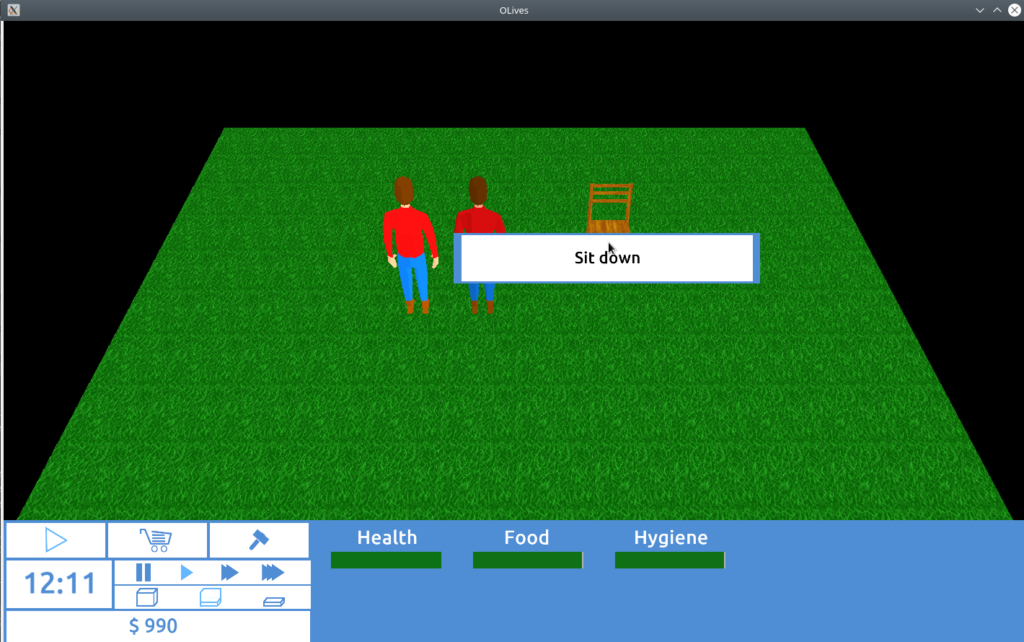– Dynamically generate “virtual” job types (sitting down/lying down) for objects that have the appropriate category
– Add these job types as supported actions to human.json to pass basic action support validation
– Add dummy jobs for these new actions (sitting down being the exception, which is at least partially implemented)
– Extend the Python interface a bit, so that an object’s “entry points” can be requested as well (not just the action points)
– Refactor the calculation of action points on the C++ side so that the entry point calculation will not duplicate code
Hi! Before getting started with the actual workings of entering/leaving an object I’ve decided to first get the mechanics going to actually get the object we wish to put into another into the right position.
While the rather verbose commit message more or less speaks for itself, there is actually a slight visual change to be seen this time:

..which shows how the dynamically generated jobs look when selecting an object in Sitting/Lying categories. With that working the next stop is to finish that navigation step before getting into the actual sitting/lying mechanics!
